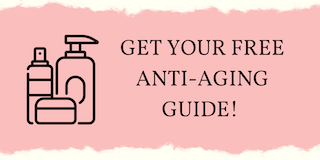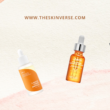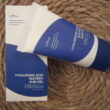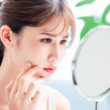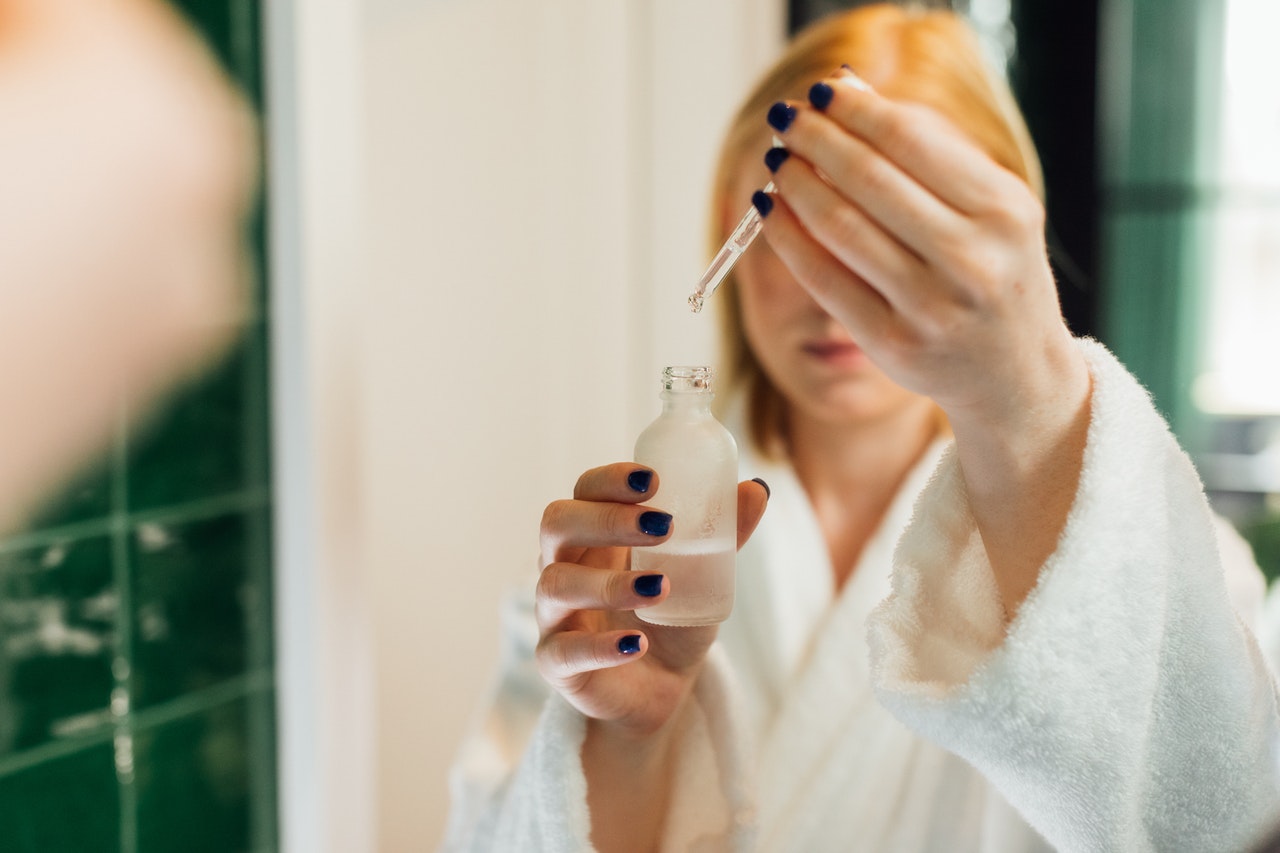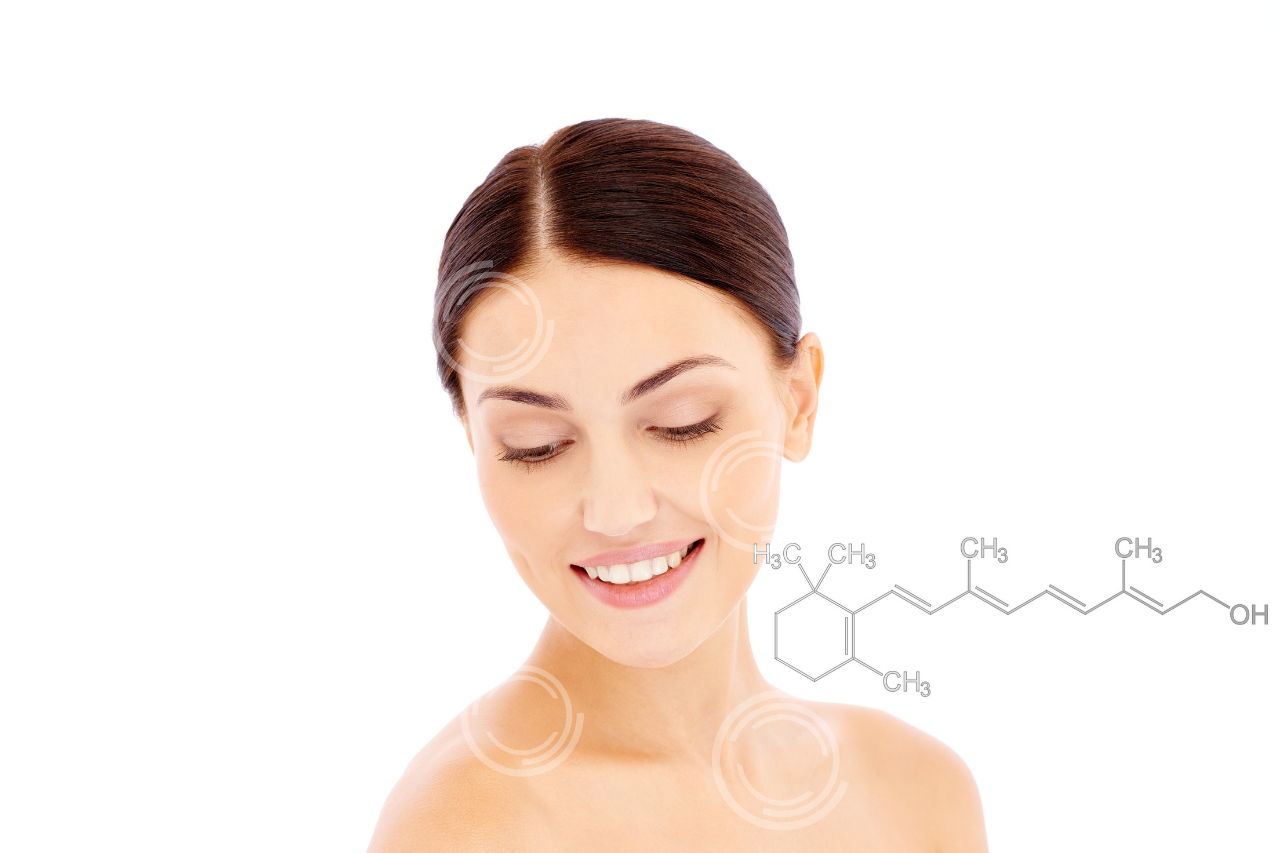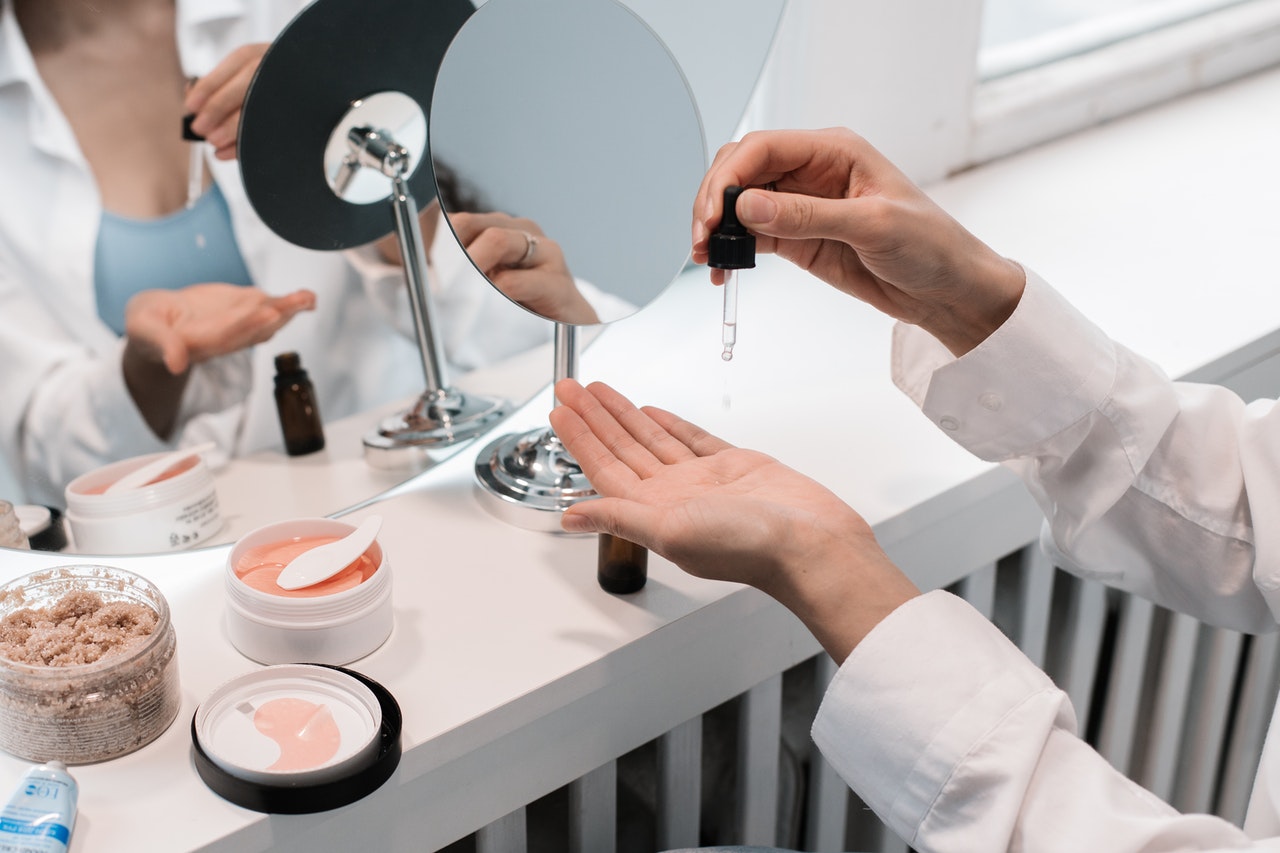Niacinamide and retinol are the holy grails in the skincare world. The internet is filled with information about what ingredients to mix in skincare. I get it, it can be daunting to mix different ingredients while not knowing whether they will make or break your skin. And what is it like in the case of niacinamide and retinol? Can you mix niacinamide and retinol after all? (I didn’t mean it to rhyme like this LOL)
Is it safe to mix Niacinamide and Retinol?
The short answer is yes, you can totally mix niacinamide and retinol. Niacinamide and retinol are some of the top names in skincare because of their endless skin benefits. In fact, many skincare experts would encourage you to do so.
Benefits of Niacinamide for skin
Niacinamide, aka Vitamin B3, is like your friend that protects the skin in many ways. It is one of those true multitaskers in skincare that many skincare brands try to use. Because niacinamide:
- Clears acne and has anti-inflammatory properties;
- Controls oil production on the skin;
- Treats rosacea and hyperpigmentation on the skin;
- Treats sun damage;
- Reduces fine lines and wrinkles;
- Fight early aging signs and dark spots;
- Is a powerful antioxidant that protects the skin against UV lights
Quite the whole package, am I right? While all skin types can reap the benefits of using niacinamide, acne-prone and sensitive skin can definitely benefit the most from using niacinamide-infused skincare products. Studies also show that niacinamide is able to reduce non-melanoma skin cancer risk.
Check out our blog post: The Complete Guide To Vitamin B3 For Skin
Benefits of Retinol for skin
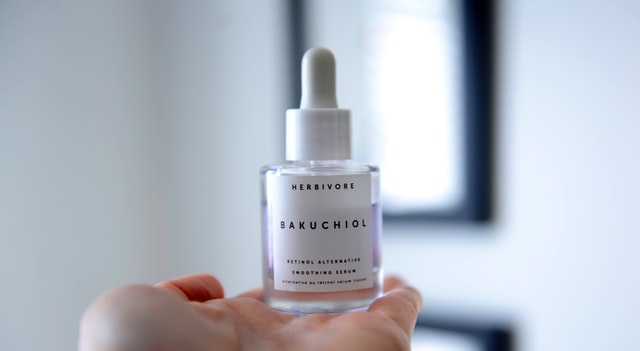
If you have been using retinol, you already know what a powerhouse ingredient it is. Technically, it is one of the forms of Vitamin A and is the main ingredient used in anti-aging products.
Key benefits of retinol are:
- Improves skin elasticity;
- Reduces the appearance of wrinkles;
- Increases collagen production of the skin;
- Treats age spots;
- Brightens the skin;
- Evens out the skin tone
- Controls acne by reducing oil production
Retinol is used in many anti-aging products thanks to its ability to help increase collagen production. This, as a result, leads to plumper, more elastic, and younger-looking skin.
Drawbacks of using Retinol
As miraculous as retinol is, it does have some drawbacks. It is no secret that retinol can be irritating or drying on the skin, especially sensitive skin. Common side effects of retinol are dryness, redness, tightness, and peeling. While over-the-counter retinol products are less likely to irritate the skin than their stronger counterparts, it is recommended to be extra cautious.
In order for retinol to properly work on your skin, you have to give it some time to adjust. The wise move is to start from a low percentage (0.01% to 0.03%, for example) of retinol products and work your way up.
Using ingredients like niacinamide can reduce the possible irritation. Always use a moisturizer with hydrating agents like peptides, hyaluronic acid, ceramides while layering with retinol. Plus, retinol makes your skin sensitive to the sun. It is a MUST to use sunscreen (SPF 30 at least) to minimize sun damage.
If your skin gets inflamed as a result of retinol, stop using it. Apply a cold compress to your skin and try to wash your face with cold water. Use gentle products, make sure to moisturize your skin.
Using soothing ingredients like Centella Asiatica, aloe vera can help you with redness and itchiness.
Your skin should restore itself within a few weeks.
What are the benefits of mixing niacinamide and retinol for skin?
Using niacinamide and retinol together has many benefits. Here is why:
1. Niacinamide reduces possible irritation caused by retinol
This one is probably one of the most crucial benefits of mixing niacinamide and retinol. This means that using a retinol cream that contains niacinamide is likely to irritate the skin less in comparison with using a retinol product alone, for instance.
2. Niacinamide and retinol will boost your anti-aging routine
One study shows that niacinamide (along with Ceratonia siliqua) enhances the work of retinoids and treats the appearance of photoaged skin more effectively.
3. If you suffer from acne, mix niacinamide and retinol
When treating acne, you really need the best of both worlds. And those definitely are niacinamide and retinol. It has been proven that when used together, their anti-inflammatory properties complement each other and as a result, you get a more effective anti-acne solution.
How to use niacinamide and retinol together?
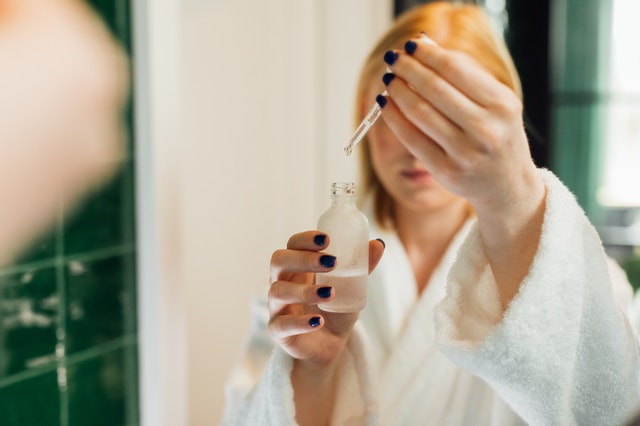
It is important to understand that you don’t necessarily have to apply niacinamide and retinol at the same time to make the most out of it.
Generally, if you are using separate products with niacinamide and retinol, it is better to use niacinamide first. Since it is water-based, it will be quickly absorbed by the skin. Retinol is oil-based, so it will take some time for it to be soaked into the skin.
It is also recommended to use niacinamide for a couple of weeks before using retinol, so your skin can build its skin barrier before getting familiar with retinol. Remember how we talked about reduced irritation by niacinamide? This is precisely what it is about.
Use retinol in PM routine due to the sun sensitivity factor. DON’T forget to wear sunscreen daily.
How to use skincare products with niacinamide and retinol?
There are a bunch of products available packed with niacinamide and retinol. The way to use these products really depends on what type of products they are.
If you are using a serum with niacinamide and a moisturizer with retinol, for example, use the serum first since serums should be layered before applying a moisturizer.
In case you are using two serums that have niacinamide and retinol, apply niacinamide in AM routine, apply retinol at the PM routine. And certainly, put on a moisturizer afterward. And, SPF! Rain or shine!
Products that combine Niacinamide and Retinol
Here are some listed products in case you want to give niacinamide and retinol a try:
Like many CeraVe products, this one is formulated with niacinamide + ceramides which only adds to the skin’s moisture-retaining ability. If you are acne-prone and suffer from post-acne inflammation and acne marks, this one is for you. Niacinamide soothes the skin, while retinol deals with hyperpigmentation and acne marks. It is a perfect combo for damaged, acne-prone skin that needs a stronger skin barrier. It also has licorice root extract to brighten the skin. What’s not to like really?
This anti-aging serum from La Roche-Posay specifically targets fine lines and sun-damaged skin. Retinol here works to smooth out wrinkles and fine lines, and vitamin B3, aka niacinamide, hydrates the skin. Applying 3 or 4 drops in your PM routine will do the job just fine. Don’t forget to use sunscreen, because you know, retinol and sun sensitivity.
This night moisturizer penetrates the deeper layers of the skin and is absorbed very quickly. It is fragrance-free, dye-free, and the niacinamide + retinol formula here hydrates the skin and provides an anti-aging dose. If you have dark spots, you will see some better results in four weeks or so. One customer says it has improved her dark spots only after a week. Try and see if you can break her record, huh? 🙂
This one is new to me, I will admit. However, many who have been struggling with dark spots have known about this serum. It contains Retinyl Propionate, which is a type of retinoids, not very well known, but very potent one at that. Added niacinamide acts to only enhance the results by hydrating and gently exfoliating the impurities away. It is alcohol and paraben-free, which means it is less likely to irritate the skin.
Are there any side effects of using Niacinamide and Retinol together?

It is safe to use niacinamide and retinol together, however, some adverse reactions can rarely be experienced.
Chances are that your skin is so sensitive that even the niacinamide “barrier” could not prevent retinol’s irritating effect. It might also be the result of a high concentrated retinol product. (1% is the highest)
As mentioned before, your skin has to build tolerance, so it is important to start from the lowest concentrations.
Final Takeaway
The final takeaway is that niacinamide and retinol are definitely stronger together. Niacinamide can tone down possible irritation caused by retinol and provide a gentler experience for your skin.
Using them in your skincare routine is definitely going to be a game-changer for your skin. Follow these instructions to make the most out of mixing niacinamide and retinol:
- To be on the safe side, use niacinamide twice a day for a few weeks before you start retinol.
- It is better to use them at different times of the day. However, if you want to layer them layer them, layer them 5 minutes away from each other.
- If you want to apply niacinamide and retinol at the same time, apply niacinamide first. (esp if it is a serum) If it is a moisturizer, it should go as the last step.
- NEVER, EVER forget to use a broad-spectrum sunscreen SPF 30 at least) daily when using retinol.
- If you have extra sensitive skin, start by using retinol once a week and gradually work your way up till your skin builds up a tolerance. Start with lower percentages which is the safest way anyway.

